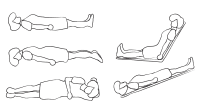Key takeways
– Communication across the continuum of care is more than “just read my notes.”
– Consistent communication is key to safe, effective patient care.
– Interdisciplinary care team communication breaks down the silos that exist and focuses on patient-centered
Hospitals face tremendous challenges to stay viable and continue to serve the patients in their communities. Coordination of care among interprofessional care team (IPCT) members, whether during a patient’s acute care or when moving between settings or providers, ensures both quality of care and a facility’s financial viability. It requires extensive preparation and education of patients and their families and community support system, as well as sharing of information among care providers. Failure to coordinate plans may lead to delays in care, transition, and discharge, as well as reduced quality of care. These issues may, in turn, result in poor patient outcomes, decreased reimbursement potential, and low patient satisfaction.
Closing communication gaps leads to more effective care coordination, ensuring each team member knows his or her plan for the patient and how it impacts other team members’ plans. Recommended interventions include initial and ongoing assessment, regular focused communication, and constant communication.
Initial and ongoing assessment
“Discharge planning begins on day one.” Those were the very first words spoken by my first nursing instructor, Jeannette Lamphear, MSN, RN, on my first day of nursing school. They’ve stuck with me ever since. With 1- to 3-day hospital stays as the norm rather than the exception, living that statement is more important than ever. For instance, early initiation of any third-party approval for postdischarge service helps decrease the potential for transition delays and identify possible gaps in care.
ANA’s Scope and Standards of Practice states: “Care coordination—accountability for care of the patient across the settings—is a core professional standard.” The initial assessment performed by IPCT disciplines should include the patient’s prior level of function, living situation, social support system, and any potential barriers to the postacute treatment plan. Each ongoing interaction with the patient and his or her support system should validate and verify the initial findings or identify changes to the plan.
Regular focused communication
Regular IPCT meetings, care coordination rounds, or huddles can identify potential barriers to progress along the continuum of care and provide timely resolution. Using the geometric mean length of stay as a benchmark and referring to Zander’s “4 Plans” as a framework, the IPCT can develop a communication platform that ensures all members are aware of delays and creates an efficient culture of treatment. (See Make a plan.)
Constant communication
Recognizing that all IPCT members are not with the patient 24/7, communication must flow consistently throughout the day as plans and conditions change. To help keep the patient moving seamlessly through the continuum of care, develop a communication plan that alerts the team of any changes.
Consider the following scenarios:
- During initial assessment, a patient planned to return home with outpatient follow-up. However, after physical therapy evaluation, his need for subacute rehabilitation is identified.
- The physician makes a medication change that requires prior authorization.
- The managed care organization denies a request for lower-level care.
In each of these scenarios, if communication among all IPCT members is limited to a daily meeting, the transition runs the risk of delay. Communication must continue throughout the day—by telephone, secure text, or email—when any changes occur so the team can then update the plan and coordinate any additional care or referrals.
A ripe environment
Transition and discharge should be safe, smooth, and sustained. By working collaboratively, the IPCT can, as Bethea and colleagues write, “create an environment ripe for improved patient safety and better quality of care.” Improving the communication within the IPCT contributes to a heightened understanding and appreciation of each member’s role, improves collegial and collaborative relationships, and promotes proactive identification of gaps in care and services needed to provide excellent patient care.
Colleen M. Morley is the director of case management at MetroSouth Medical Center in Blue Island, Illinois.
Selected references
Bethea DP, Holland CA Jr, Reddick BK. Storming the gates of interprofessional collaboration. Nurs Manage. 2014;45(9):40-5.
Case Management Society of America®. Standards of Practice for Case Management. 2016.
Lamb G. Overview and summary: Care coordination: Benefits of interprofessional collaboration. Online J Issues Nurs. 2015;20(3):1.
Zander K. Case management accountability for safe, smooth, and sustained transitions: A plea for building “wrap-around” case management services now. Prof Case Manag. 2010;15(4):188-99.
Zangerle CM. Bridging the gap between acute and postacute care. Nurs Manage. 2015;46(2):8-10.



















1 Comment.
Care coordination across the progression of care is the deliberate, longitudinal and proactive process of making sure the patient is receiving the right care, at the right time in the right place. That means that someone has to be RESPONSIBLE for advocating for the patient to move from critical care to a medical unit when it is appropriate; it means that someone is RESPONSIBLE for speaking up to the physician when an ordered intervention is contrary to the patient or family’s wishes; it means that someone is RESPONSIBLE for questioning the value of another diagnostic test when the previous ones were negative; it means that someone is RESPONSIBLE for making sure that the patient is not warehoused over the weekend because the covering physician won’t discharge the patient; it means that someone is RESPONSIBLE for presenting alternatives to the patient and family about post acute services; it means that someone is RESPONSIBLE for making sure the patient isn’t exposed to avoidable clinical or financial risk; and it means that someone is RESPONSIBLE for helping the patient and family understand the implications of their illness, their treatment plan, and their medical regimen. In my day, that ‘someone’ was the primary nurse. While everyone on the patient’s care team is ACCOUNTABLE for outcomes, someone has to own the responsibility of the tasks involved in producing high quality, low cost outcomes. Today, in my travels to hospitals across the country, it’s a rare event to encounter professional nurses who see themselves as the coordinators of care and even less as their patient’s advocate. An example of this observation is the time when I was recently in a Michigan hospital and sat in on a care conference on the oncology unit. There was no physician present, but one of the nurses reported that her patient was getting ‘stuck’ every 4 hours for tests that seemed excessive. When I asked her how she handled the situation, she reported that “it wasn’t her job to question” the doctor’s order. And when I cited the fact that the incidence of hospital acquired anemia had escalated over the last few years, she suggested, that “I find the doctor and tell him.” What are we teaching nurses today? Tasks? Skills? What happened to critical thinking and patient advocacy. As an old-timer, I’m disappointed.